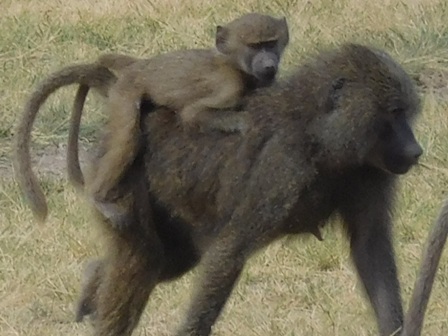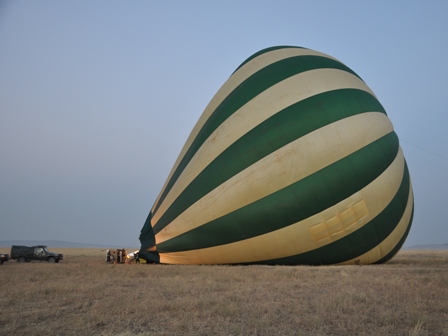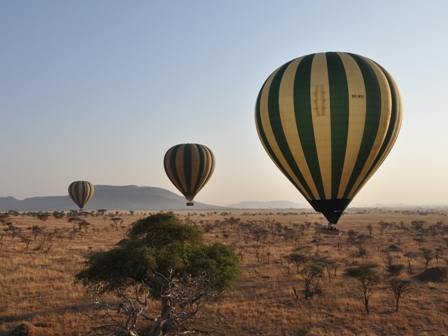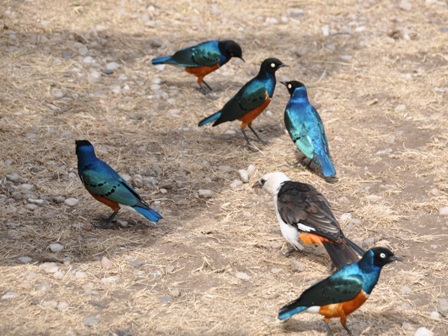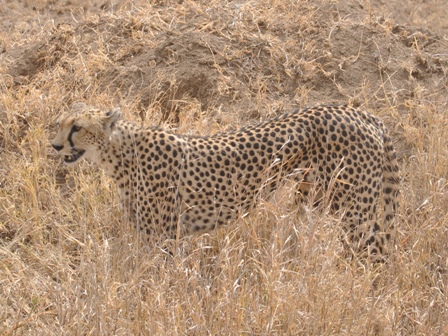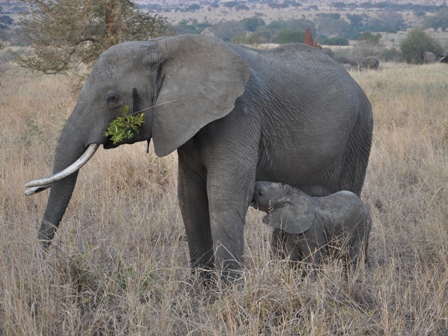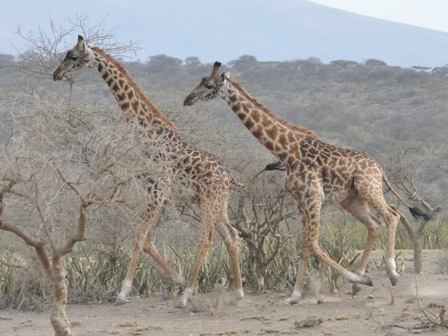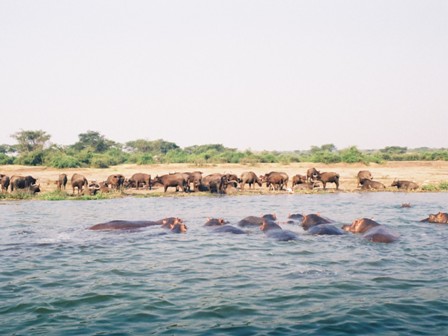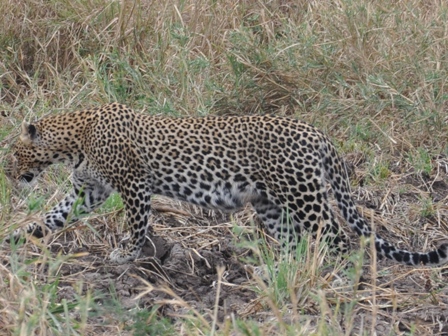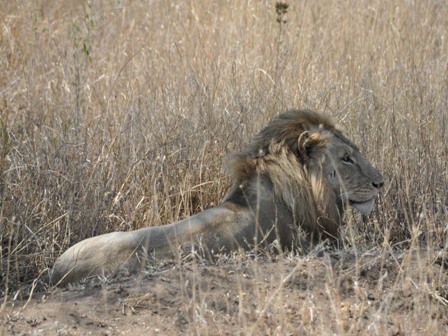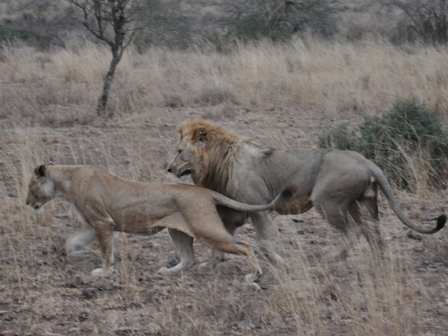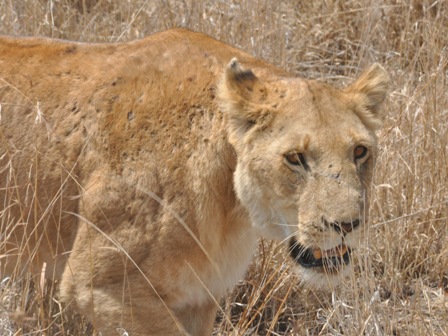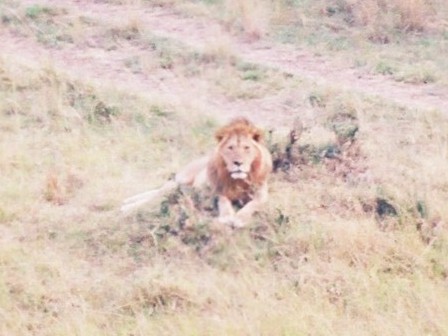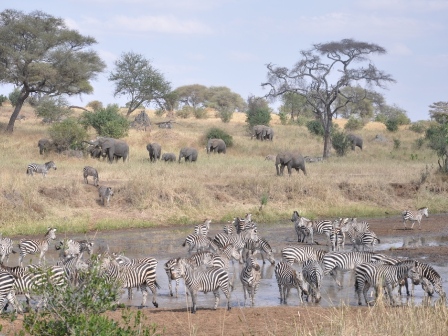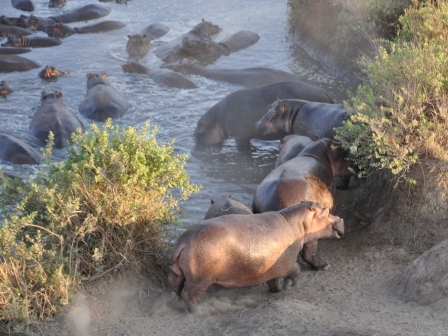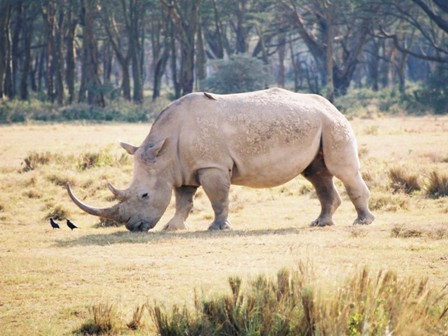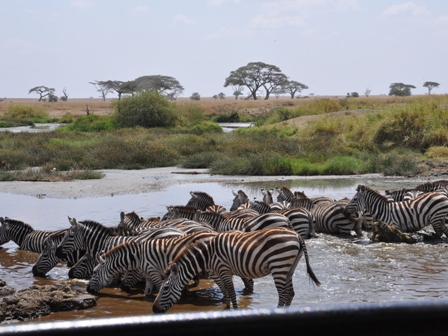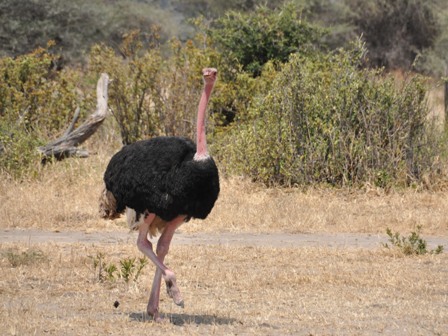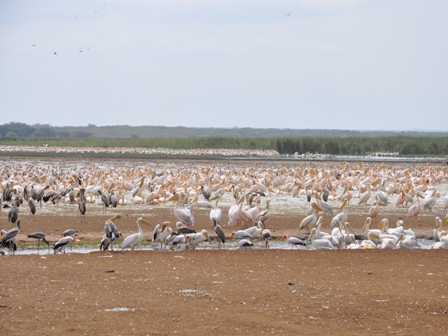1. Where in Africa ? Which game parks, game reserves?
Within Africa, there are wildlife game parks/reserves in East Africa (Kenya, Uganda, Tanzania) and South Africa (Namibia, Mozambique, Botswana, Zimbabwe, South Africa). Most places will have many species of game, others have some "specialities" to offer. A lot can be read about all these parks on the web.
Generally, the Game Parks and conservation areas are game viewing only (Masai Mara, Serengeti, Ngorongoro, etc.). Some game reserves (eg Selous Game Reserve in Tanzania) allow, in addition to viewing, strictly controlled and licensed hunting.
For the Safari first-timers and also second, third timers and enthusiasts, we recommend East Africa as a place to see the most diverse game within a relatively short space of time. Kenya is the most popular as it has extensive tourist facilities (namely hotel beds). It is also very busy in the Kenyan game parks with many safari vehicles surrounding the same game sights. Both Uganda and, especially, Tanzania offer the same diversity of game, however with significantly lower number of tourists and Safari vehicles. Tarangire National Park in Tanzania is the "Home of the Elephants" as is Amboseli in Kenya, Murchison Falls in Uganda are famous for their Gorilla population, Queen Elizabeth National Park is also very popular for its Hippos. The park extends from Lake George in the north-east, connected by the Kazinga Channel to Lake Edward in the south-west and offers boat rides in the lakes/channel, alongside the Hippos.
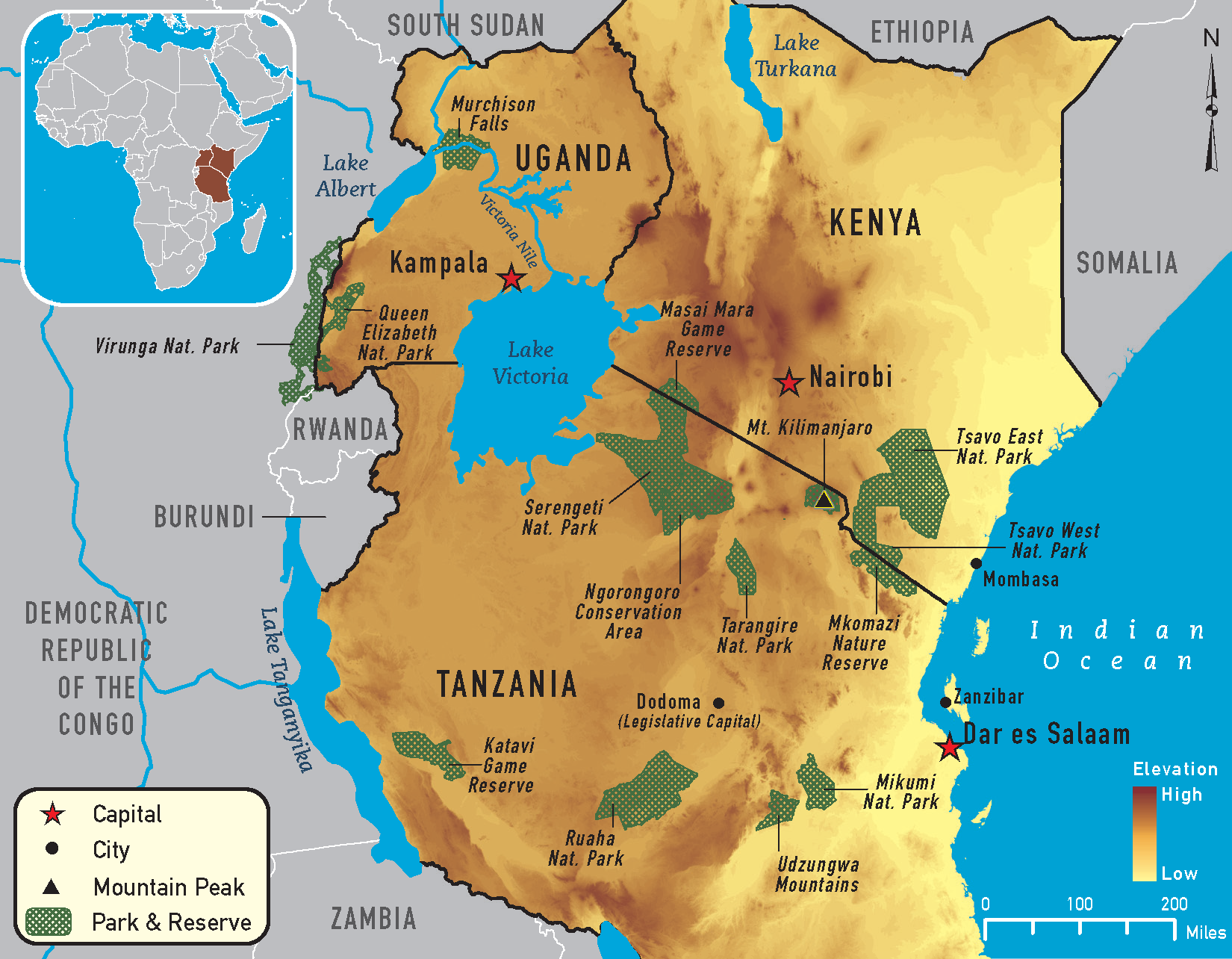 Overview of East Africa showing the Major Game Areas, also Kilimanjaro. Picture courtesy of cdc.gov
Overview of East Africa showing the Major Game Areas, also Kilimanjaro. Picture courtesy of cdc.gov
LuxeSafaris recommended itineraries include:
6 Day Tanzania (Tarangire, Lake Manyara, Serengeti and Ngorongoro)
4 Day Kenya "Introduction" Safari (Nairobi National Park, Amboseli, Tsavo National Park
4 Day Uganda Safari, (Queen Elizabeth and Murchison Falls parks
9 Day Kenya / Uganda / Tanzania Safari. Queen Elizabeth and Murchison Falls in Uganda, Amboseli and Tsavo in Kenya, Tarangire, Lake Manyara and the mighty Serengeti.
7 Day Kenya / Tanzania Safari, (Masai Mara, Lake Naivasha, Tarangire, Ngorongoro Crater, Lake Manyara
LuxeSafaris specialises in putting together bespoke/tailored itineraries to suit our clients' choice of what they wish to be able to see, time availability, budget, etc.
2. Which season (time of the year) is best for me and what game will I be able to see?
In East Africa, all game can be seen all year round. The major difference is the location of the large Wildebeeste and some Zebra herds (the "Migration") at different times of the year. "Seasons" in terms of a Safari trip is more relevent to whether it is rainy season or whether it is the time of the year when visitors can take most holidays. Even in "low" season (mostly rainy season), one is more likely to see a Lion or Cheetah hunt as other game like Wildebeeste, Zebra, Antelope are in plenty. As there are fewer tourists and safari vehicles, the game viewing atmosphere is also that much calmer. In the dry season, it may be easier to spot the game as the grass is not that high. In February, in the Serengeti, one may see calves being born as the Wildebeeste and other animals take advantage of the rains and plenty of green pastures. Wildebeeste can vary their gestation period by up to two months ensuring they give birth when green pastures are aplenty.
For practical purposes, unless you are keen on seeing the Mara river crossing (see below) which is always a matter of luck whether it happens on your trip), all animals can be seen all year around. Prices for accomodation are also lower in low season.
 Courtesy: galleryhip.com
Courtesy: galleryhip.com
"Migration" - some key Facts:
1. Its the Wildebeeste, numbering in the tens and hundreds of thousands, that migrate, following the rains. Many Zebra follow, not all. Most other animals stay put.
2. Wildebeeste follow the rains, which can be unpredictable. Wildebeeste seem to have an uncanny nose for where/when the rains are going. As example, in 2017, the Wildebeeste moved northwards from Serengeti towards Masai Mara approximately one month early as rains failed in southern / middle Serengeti.
3.The Migration itself can be viewed from different parts of the Serengeti and Masai Mara Game Parks. See the map on the left where the Wildebeeste are likely to be at different times of the year. Whereever they are, they will be accompanied by many Zebra and antelopes of varying species. The big cats also have much more to feed on and visitors are more likely to see big cat hunts, successful or not.
4. The one event that most visitors are keen to see is the "Mara river crossing". This is when hundreds, thousands of Wildebeeste, over days, gather on the side of the river waiting for the first one to jump into the river and begin the crossing, others then follow. This event may happen 3-5 times in one season. There is no telling when the wildebeeste will start crossing and whilst many visitors have been lucky to see it, others have sometimes spent 2-3 days (most of their Safari Holidays) cramped in a Safari vehicle parked close to the place where the wildebeeste have gathered, from dawn till dusk and not seen any crossing.
 Buffalo on the move, Tarangire National Park, July 2017
Buffalo on the move, Tarangire National Park, July 2017
Sights very similar to the Wildebeeste Migration, with the exception of the Mara river crossing, can also be seen in different parts of many game parks. As example, picture on the left taken at at Tarangire National Par shows. approximately 4-5 thousand buffalo on the move from one part of the park to the water-hole.
 Wildebeeste on the move, Ngorongoro Crater, July 2017
Wildebeeste on the move, Ngorongoro Crater, July 2017
In Ngorongoro Crater, Wildebeeste doing the same. About a two kilometre long trail of wildebeeste moving away from the water towards grazing lands. Wildebeeste are seen in Tarangire and Ngorongoro (and other parks too) all year round as there is adequate water all year round.
Comparing the two giants in East Africa, Masai Mara in Kenya and Serengeti in Tanzania, both parks have mostly similar game animals species. Wildebeeste and majority of Zebra population is mostly in the Serenget apart from between July and October. Game is viewable in Masai Mara within a relatively small area (concentration of Safari vehicles is much higher in Masai Mara than in the Serengeti) whereas the mighty Serengeti is vast allowing for game to roam over a larger area, providing visitors with a larger variety of where to see it. The Serengeti plains are also quite an amazing sight. The Wildebeeste calving season (around February) takes place in Serengeti.
Most of the parks have nearly all the game animals of East Africa, namely Lions, Cheetahs, Leopards. Elephants, Giraffe, Zebra, Wildebeeste, various species of Antelope and Gazelles, Warthogs, Baboons and various species of monkeys, a wide array of birds, etc. Many parks also have their "specialities" (only specialities are listed below, the parks also have a wide variety of other game):
- Tarangire, Tanzania - Home of the elephants. Can see lots other game too, especially Buffalo, Lions, Leopard, Cheetah, Giraffe.
- Lake Manyara, Tanzania - Home of the tree climbing lions. Pelicans, Flamingoes, Baboons, Elephants.
- Ngorongoro Crater (strictly not a Crater but a Caldera) - All animals
- Lake Nakuru, Kenya - Flamingoes, White Rhino
- Amboseli, Kenya - Elephants, Lions
- Murchison Falls, Uganda - Gorillas. These are not seen in any of the parks in Kenya or Tanzania
- Queen Elizabeth National Park, Uganda - Hippos. Highlight of a visit to this park is a 2 hour boat ride in the lake alongside the hippos and also other game on the shores co-habiting with the local villagers also living mostly along the shores of the lake.
